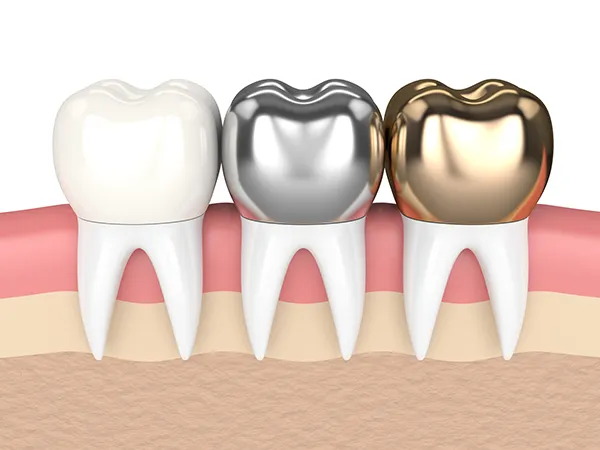 If you have a damaged, cracked, or decayed tooth, our dentists in Spokane Valley here at Coulter Family Dentistry can help you with the placement of a dental crown.
If you have a damaged, cracked, or decayed tooth, our dentists in Spokane Valley here at Coulter Family Dentistry can help you with the placement of a dental crown.What are Dental Crowns?
Dentists can utilize crowns to resolve many issues concerning a damaged tooth.
Crowns work to restore the shape, size, and function of teeth.
If your tooth has cracks, chipping, or excessive decay, our team may use crowns to help in restoring the teeth.
From protecting damaged teeth to enhancing the look of a smile, crowns do many things and are some of the most frequently performed dental procedures in dental offices.
A dental crown is a type of cap that a dentist fits over a tooth to serve as the natural crown of a tooth.
Do I Need a Dental Crown?
There are many situations where we would recommend having a dental crown. For instance, if you have a tooth cavity that cannot be repaired with dental fillings, a crown may serve the purpose.
If you have a weak tooth because of a crack or wearing down extremely, you could benefit from crowning. The crown can help strengthen the tooth.
After a root canal treatment, our dentists may suggest that you get a crown to protect your treated tooth.
Additionally, if you are scheduled for dental implant placement, one of the pieces of restorations you will get is the crowning of the implants.
Moreover, having a heavily discolored tooth or an unusually shaped one could mean placing a dental crown to enhance its look.

Types of Crown Material
Gold alloy crowns feature a combination of copper, gold, and other metals. They bond pretty well onto the tooth and do not fracture.
If you aren't concerned about an entirely white smile, you can use gold crowns. They are preferred by people who are seeking a fashion statement.
Another type is the porcelain-fused-to-metal crown. This crown strongly bonds to the tooth since it is attached to a metal structure. Porcelain-fused-to-metal crowns are extremely durable.
Additionally, the porcelain section of the crown tends to blend well with your natural teeth. As such, these crowns are the best option aesthetically and functionally.
You can also find zirconia crowns, which are fabricated from zirconium oxide, a white powdered metal that does not give a harmful response to the body or living tissue in people known to suffer from allergies.
Moreover, zirconium crowns can withstand biting and chewing forces and they are a choice if you have bruxism. They can also be constructed to match your real teeth.
Dental Crown Procedure
You may require two dental visits to get your crown placed on your tooth.
During the initial visit, our dentists prepare the tooth by removing any decay. A root canal procedure may be done to get rid of decay.
The dentist then files down the external part of the tooth so that the crown fits properly. After that, we take an impression of the teeth that our dentist uses to make the crown.
The impression provides the precise model for the crown.
We place a temporary crown while you wait for the lasting piece to be fabricated. It takes about two to three weeks before you come back and get your crown placed and the temporary crown removed.
Crown Lengthening
We also do crown lengthening. Crown lengthening removes excess gum tissue to expose the teeth.
This procedure helps get rid of a "gummy smile," when your gums are showing more than your teeth and giving your teeth a shortened appearance.
Other reasons for crown lengthening are if you have decay below the gumline or if your gums need to be reshaped to better fit an oral appliance.
Let Coulter Family Dentistry Help with Your Oral Care Needs!
To learn more about crown placement and when it can help restore your damaged teeth, schedule a consultation with our Spokane Valley dentists today at (509) 209-8747.

